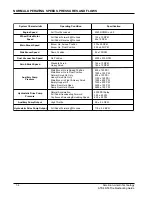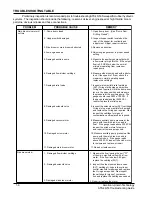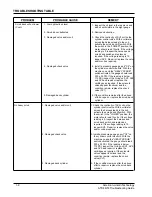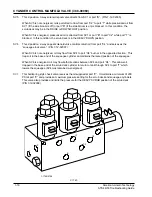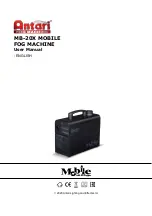
American-Lincoln Technology
1-3
ATS 46/53 Troubleshooting Guide
The four basic concepts of hydraulics are pressure, flow rate, pressure drop, and efficiency. A good
understanding of these concepts and a working knowledge of hydraulic components provide the necessary
tools for successful hydraulic troubleshooting.
Pressure
- Pressure is defines as force applied over a surface and is measured as force per unit area
(pounds/square inch or PSI). Hydraulic oil is an incompressible fluid, unlike air, therefore a force applied
to an area of oil is transmitted throughout the fluid.
Flow Rate
- Flow rate is defined as volume transferred over a period of time and is measured as volume
per unit of time (gallons/minute or GPM). The flow rate of hydraulic oil determines the speed of hydraulic
components including motors and cylinders.
Pressure Drop
- Pressure drop is a decrease in pressure from one point to another in a hydraulic circuit.
Pressure drop occurs when hydraulic oil does work, such as: creating heat due to friction and flow through
restrictions, hoses, valves, cylinders, pumps, and motors; transmitting torque measurement of flow and
pressure drop between two points in a hydraulic circuit, the amount of power used between these points
may be determined.
Efficiency
- Efficiency is a measure of actual performance compared to theoretical performance. Efficien
cies are measured in percentages. In hydraulics, three types of efficiency are measured including: volu
metric, mechanical, and overall.
Volumetric efficiency is necessary to calculate output flow rates of pumps and speeds of hydraulic
motors and cylinders. For pumps and motors, volumetric efficiency indicates the amount of internal leakage
between pressure and suction and case drain flow. Volumetric efficiency typically decreases with an increase
in pressure.
Mechanical efficiency is necessary to calculate actual pressure output of pumps and torque output of
hydraulic motors. Mechanical efficiency indicates energy wasted due to friction between shafts, bearings,
seals, seal plates, and other mechanical components of pumps and motors.
Overall efficiency is necessary to calculate actualy power required to operate a pump or motor.
Overall efficiency is the product of volumetric and mechanical efficincy.
BASIC HYDRAULICS





